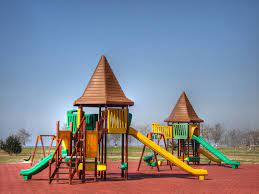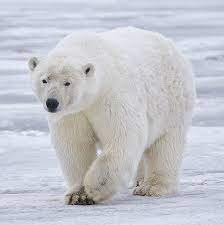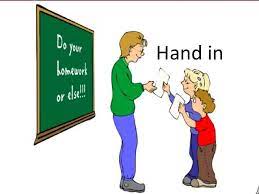Tiếng Anh 10 Unit 9 Language1. Listen and repeat. Pay attention to the stressed words in the sentences. 2. Mark the stressed syllables in the words in bold. Then practise saying the sentences with a natural rhythm. 1. Match the words and phrases with their meanings. 2. Complete the sentences using the correct form of the words and phrases in 1. 1. Choose the correct word or phrase to complete each sentence. 2. Change these sentences into reported speech. Tổng hợp đề thi học kì 2 lớp 10 tất cả các môn - Kết nối tri thức Toán - Văn - Anh - Lí - Hóa - Sinh - Sử - Địa...
Lựa chọn câu để xem lời giải nhanh hơn
Pronunciation 1 Video hướng dẫn giải Pronunciation: Rhythm (Phát âm: Nhịp điệu) 1. Listen and repeat. Pay attention to the stressed words in the sentences. (Nghe và nhắc lại. Chú ý đến các từ nhận trọng âm trong câu.) 1. ‘Don’t ‘pick the ‘flowers when you ‘go to the ‘park. 2. The ‘students ‘clean the ‘school ‘playground ‘every ‘weekend. 3. ‘What’s ‘happening with the ‘polar ‘bears? 4. Did you ‘watch the docu‘mentary about ‘air pol‘lution? Lời giải chi tiết: 1. ‘Don’t ‘pick the ‘flowers when you ‘go to the ‘park. (Đừng ngắt hoa khi bạn tới công viên.) 2. The ‘students ‘clean the ‘school ‘playground ‘every ‘weekend. (Các học sinh dọn dẹp sân chơi của trường học mỗi cuối tuần.) 3. ‘What’s ‘happening with the ‘polar ‘bears? (Chuyện gì đang xảy ra với loài gấu trắng vậy?) 4. Did you ‘watch the docu‘mentary about ‘air pol‘lution? (Cậu đã xem phim tài liệu về ô nhiễm không khí chưa?) Pronunciation 2 Video hướng dẫn giải 2. Mark the stressed syllables in the words in bold. Then practise saying the sentences with a natural rhythm. (Đánh dấu các âm tiết được nhấn mạnh trong các từ được in đậm. Sau đó tập nói các câu với nhịp điệu tự nhiên.) 1. Don’t feed the animals in the zoo while they are resting. 2. The teacher asked his students to focus on their work. 3. What were you doing when I rang you up an hour ago? 4. Are you reading the book about endangered animals in the world? Lời giải chi tiết: 1. ‘Don’t ‘feed the ‘animals in the ‘zoo while they are ‘resting. (Đừng cho động vật trong sở thú ăn khi chúng đang nghỉ ngơi.) 2. The ‘teacher ‘asked his ‘students to ‘focus on their ‘work. (Thầy giáo nhắc các bạn học sinh tập trung vào việc của họ.) 3. ‘What were you ‘doing when I ‘rang you ‘up an ‘hour ago? (Cậu đang làm gì khi tớ gọi cho cậu vào 1 tiếng trước thế?) 4. Are you ‘reading the ‘book about en‘dangered ‘animals in the ‘world? (Cậu đang đọc sách về những loài động vật có nguy cơ tuyệt chủng trên thế giới à?) animals/ˈænɪmlz/: (số nhiều) động vật resting/ˈrestɪŋ/: nghỉ ngơi teacher/ˈtiːtʃə(r)/: giáo viên students/ˈstjuːdnts/: học sinh focus/ˈfəʊkəs/: tập trung doing/ˈduːɪŋ/: làm reading/ˈriːdɪŋ/: đọc endangered /ɪnˈdeɪndʒəd/: gặp nguy hiểm, (động vật) có nguy cơ bị tuyệt chủng Vocabulary 1 Video hướng dẫn giải Vocabulary: Environment (Từ vựng: Môi trường) 1. Match the words and phrases with their meanings. (Nối các từ và cụm từ với nghĩa của chúng.)
Lời giải chi tiết:
1. biodiversity (n): đa dạng sinh học a. the variety of plants and animals in a particular area (sự đa dạng của thực vật và động vật trong một khu vực cụ thể) 2. habitat (n): môi trường sống d. the natural environment in which a plant or an animal lives (môi trường tự nhiên mà thực vật hoặc động vật sống) 3. ecosystem (n): hệ sinh thái e. all the plants and animals in an area and the way they affect each other and the environment (tất cả các loài thực vật và động vật trong một khu vực và cách chúng ảnh hưởng lẫn nhau và môi trường) 4. wildlife (n): cuộc sống hoang dã b. animals and plants that grow in natural conditions (động vật và thực vật phát triển trong điều kiện tự nhiên) 5. climate change: biến đổi khí hậu c. changes in the world’s weather, especially an increase in temperature (những thay đổi của thời tiết trên thế giới, đặc biệt là sự gia tăng nhiệt độ) Vocabulary 2 Video hướng dẫn giải 2. Complete the sentences using the correct form of the words and phrases in 1. (Hoàn thành các câu sử dụng dạng đúng của các từ và cụm từ ở bài 1.) 1. ______ is important because plants and animals depend on each other to survive. 2. A new series of educational programmes shows the importance of ______ to humans. 3. Their work involves protecting and creating natural ______ for plants and animals. 4. Countries need to work together to deal with global issues such as deforestation and ______. 5. Pollution can have serious effects on the balance of ______. Lời giải chi tiết:
1. Biodiversity is important because plants and animals depend on each other to survive. (Đa dạng sinh học rất quan trọng vì thực vật và động vật phụ thuộc vào nhau để tồn tại.) 2. A new series of educational programmes shows the importance of wildlife to humans. (Một loạt chương trình giáo dục mới cho thấy tầm quan trọng của động vật hoang dã đối với con người.) 3. Their work involves protecting and creating natural habitats for plants and animals. (Công việc của họ liên quan đến việc bảo vệ và tạo môi trường sống tự nhiên cho thực vật và động vật.) 4. Countries need to work together to deal with global issues such as deforestation and climate change. (Các quốc gia cần hợp tác với nhau để đối phó với các vấn đề toàn cầu như phá rừng và biến đổi khí hậu.) 5. Pollution can have serious effects on the balance of ecosystem. (Ô nhiễm có thể có những ảnh hưởng nghiêm trọng đến sự cân bằng của hệ sinh thái.) Grammar 1 Video hướng dẫn giải Grammar: Reported speech (Ngữ pháp: Câu tường thuật/ Lời nói gián tiếp) 1. Choose the correct word or phrase to complete each sentence. (Chọn từ hoặc cụm từ đúng để hoàn thành mỗi câu sau.) 1. Minh’s teacher asked him if he was / is ready to present the following day. 2. Nam’s father suggested / denied that Nam should focus on one aspect of the problem. 3. Tuan said he would complete his project the following week / next week. 4. Mai asked / said her teacher where she could get the information form. 5. Phong said he handed / had handed in his project the previous day. Phương pháp giải: - Chúng ta dùng câu gián tiếp khi muốn nói với ai đó về điều mà chúng ta hoặc ai đó đã nói trước đó. - Khi dùng câu gián tiếp, chúng ta thay đổi đại từ nhân xưng, thì của động từ, và các trạng từ chỉ thời gian. VD: “I will fly to Ho Chi Minh tomorrow”, Nam said. => Nam said he would fly to Ho Chi Minh the following day. I => he will fly => would fly tomorrow => the following day
- Khi tường thuật câu hỏi, chúng ta thường sử dụng động từ ask và trật từ trong câu giống như câu gián tiếp, và bỏ dấu ? đi.. * Câu hỏi Wh- (câu hỏi có từ để hỏi): VD: “Where do you live? => He asked me where I lived. * Câu hỏi Yes/No: VD: “Do you like the book?” => He asked me if I liked the book. Lời giải chi tiết:
1. Minh’s teacher asked him if he was ready to present the following day. (Thầy giáo của Minh hỏi liệu bạn ấy đã sẵn sàng trình bày vào ngày hôm sau chưa.) 2. Nam’s father suggested that Nam should focus on one aspect of the problem. (Bố của Nam gợi ý rằng Nam nên tập trung vào một khía cạnh của vấn đề thôi.) 3. Tuan said he would complete his project the following week. (Tuấn cho biết anh ấy sẽ hoàn thành dự án của mình vào tuần sau.) 4. Mai asked her teacher where she could get the information form. (Mai hỏi giáo viên cô ấy có thể lấy mẫu thông tin ở đâu.) 5. Phong said he had handed in his project the previous day. (Phong cho biết anh ấy đã nộp dự án của mình vào ngày hôm trước.) Grammar 2 Video hướng dẫn giải 2. Change these sentences into reported speech. (Chuyển các câu sau về câu gián tiếp.) 1. ‘The burning of coal leads to air pollution,’ Mrs Le explained. (“Việc đốt than dẫn đến ô nhiễm không khí,” bà Lê giải thích.) 2. ‘I have to present my paper on endangered animals next week,’ Nam said. (“Tôi phải trình bày bài làm của tôi về động vật có nguy cơ tuyệt chủng vào tuần tới,” Nam nói.) 3. ‘Do human activities have an impact on the environment?’ Linda asked the speaker. (“Các hoạt động của con người có tác động đến môi trường không?” Linda hỏi diễn giả.) 4. ‘What environmental projects is your school working on?’ Nam aksed Mai. (“Trường bạn đang thực hiện những dự án môi trường nào?” Nam hỏi Mai.) 5. ‘I will read more articles before writing the essay, Nam,’ Tom said. (‘Tôi sẽ đọc thêm nhiều bài báo trước khi viết bài luận, Nam,’ Tom nói.) Phương pháp giải: - Khi dùng câu gián tiếp, chúng ta thay đổi đại từ nhân xưng, thì của động từ, và các trạng từ chỉ thời gian.
- Khi tường thuật câu hỏi, chúng ta thường sử dụng động từ ask và trật từ trong câu giống như câu gián tiếp, và bỏ dấu ? đi. Lời giải chi tiết: 1. Mrs Le explained that the burning of coal led/ leads to air pollution. (Bà Lê giải thích rằng việc đốt than dẫn đến ô nhiễm không khí.) 2. Nam said he had to present his paper on endangered animals the following week. (Nam nói tuần sau phải thuyết trình về động vật có nguy cơ tuyệt chủng.) 3. Linda asked the speaker if/ whether human activities had/ have an impact on the environment. (Linda hỏi người nói liệu các hoạt động của con người có tác động đến môi trường hay không.) 4. Nam asked Mai what environmental projects her school was working on. (Nam hỏi Mai về những dự án môi trường mà trường cô ấy đang thực hiện.) 5. Tom said to/ told Nam that he would read more articles before writing the essay. (Tom nói với Nam rằng anh ấy sẽ đọc nhiều bài báo hơn trước khi viết bài luận.) Từ vựng 1. (v): hái Don't pick the flowers when you go to the park. (Đừng hái hoa khi bạn đến công viên.) 2. (n): sân trường The students clean the school playground every weekend. (Các em học sinh dọn vệ sinh sân trường vào mỗi cuối tuần.)  3. (n.phr): gấu Bắc Cực What's happening with the polar bears? (Điều gì đang xảy ra với những con gấu Bắc Cực?)  4. (n): phim tài liệu Did you watch the documentary about air pollution? (Bạn đã xem phim tài liệu về ô nhiễm không khí chưa?) 5. (v): nghỉ ngơi Don't feed the animals in the zoo while they are resting. (Không cho động vật ăn trong vườn thú khi chúng đang nghỉ ngơi.) 6. ring someone up /rɪŋ ˈsʌmwʌn ʌp/ (v.phr): gọi cho ai đó What were you doing when I rang you up an hour ago? (Bạn đang làm gì khi tôi gọi cho bạn vào giờ trước?) 7. biodiversity /ˌbaɪəʊdaɪˈvɜːsəti/ (n): đa dạng sinh học Species diversity within an ecosystem (also called alpha diversity) is an example of biodiversity. (Đa dạng loài trong một hệ sinh thái (còn gọi là đa dạng alpha) là một ví dụ về đa dạng sinh học.)  8. (n): hệ sinh thái This is upsetting the natural balance of ecosystems, which can be harmful to all living and non-living things. (Điều này đang làm đảo lộn sự cân bằng tự nhiên của các hệ sinh thái, có thể gây hại cho tất cả các sinh vật sống và không sống.) 9. (v): phụ thuộc vào nhau Plants and animals depend on each other to survive. (Thực vật và động vật phụ thuộc vào nhau để tồn tại.) 10. (v): liên quan Their work involves protecting and creating nature for plants and animals. (Công việc của họ liên quan đến việc bảo vệ và tạo ra tự nhiên cho thực vật và động vật.) 11. global issues /ˈgləʊbəl ˈɪʃuːz/ (n.phr): các vấn đề toàn cầu Countries need to work together to deal with global issues such as deforestation. (Các quốc gia cần hợp tác với nhau để đối phó với các vấn đề toàn cầu như nạn phá rừng.)  12. (n): ảnh hưởng I think I'm suffering from the effects of too little sleep. (Tôi nghĩ mình đang bị ảnh hưởng của việc ngủ quá ít.) 13. (v): bay She will fly to Ho Chi Minh City tomorrow. (Cô ấy sẽ bay vào TP.HCM vào ngày mai.) 14. (phr.v): nộp, giao Phong said he had handed in his project the previous day. (Phong cho biết anh đã giao dự án của mình vào ngày hôm trước.)  15. (phr.v): dẫn đến The burning of coal leads to air pollution. (Việc đốt than dẫn đến ô nhiễm không khí.) 16.
>> Học trực tuyến Lớp 10 cùng thầy cô giáo giỏi tại Tuyensinh247.com, (Xem ngay) Cam kết giúp học sinh học tốt, bứt phá điểm 9,10 chỉ sau 3 tháng, làm quen kiến thức, định hướng luyện thi TN THPT, ĐGNL, ĐGTD ngay từ lớp 10
|























